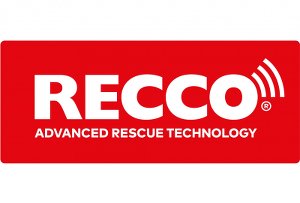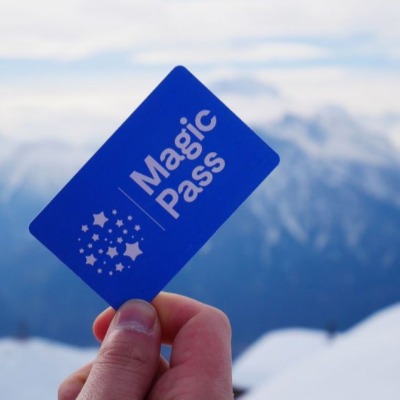Strong Snow.Kids.Summit On The Wildkogel

In the intimate setting of an expert conference, an illustrious group gathered for the "BarCamp" high above the Wildkogel. It was a jam-packed day, exploring the crucial question from all angles: How do you get children into the snow? Because once they get a taste for it, you usually can't get them away from it for life.
The start time for Wolfgang Eder's SNOW.KIDS.SUMMIT by MOUNTAIN.EXCELLENCE was 10:00 a.m. – providing the opportunity to put theory into practice. The Wildkogel had a surprise in store at the end of March: 20 centimeters of fresh snow. So, there was an almost unobstructed black run to warm up on. Just to make sure you know what you're talking about.
What was discussed can only be briefly touched upon here. For example, the busy consultant Mike Partel presented "Kids on Ski," a sponsored ski learning program for 3- to 5-year-olds. His facts: In 1960, there were 200 million people under the age of 17 in Europe; today, that number is two-thirds. Very few learn to ski through courses and in top ski resorts; instead, most learn at the local lift or from their parents. Opportunities are becoming fewer, hence his program, in which children learn to ski for free. The initial pilot group of 6 locations in three countries has already been expanded to 11 locations in four countries. The goal is to have 20 ski resorts as partners. The total budget is currently 300,000 euros. Thomas Woldrich, responsible for grassroots sports at the Austrian Ski Federation (ÖSV), presented the children's snow days organized by the ÖSV, to which 100 elementary school children are invited in individual regions. "Future:Focus:Ski&Snowboardsport" serves to provide a qualified response to media reports. The goal is an outdoor exercise law that firmly anchors outdoor instruction in the curriculum, both summer and winter. "Something like this exists in other countries," Woldrich says.
Martin Dolezal of the Vienna-based Snowsport Academy is working hard to bring snow to children. Or at least a snow substitute in the form of synthetic and roller ski slopes. "Urban skiing" is underrated in Austria, just like indoor ski slopes. It's almost ironic that, as we've heard, a Dutch company might be building an indoor ski slope in Vienna. Whether in Stockholm or Oslo, local companies in Scandinavia have not shied away from this step. With the support of the City of Vienna, you can now at least ski on synthetic slopes on the Hohen-Wand-Wiese. In the first year, 1,600 children enjoyed it, and this year over 3,000 have joined. "It's not true that migrant children have no interest in skiing," Dolezal said, referring to an experience from these urban ski days.
There were also interesting statements from the Bavarian (260,000 members!) and German Ski Associations, which are also actively encouraging children to participate in snow sports. Marco Cerny, project manager for school sports weeks, once again highlighted the €100 in unbureaucratic emergency aid that children in Austria can receive from deserving families within three days. Most applications were for ski course costs of €401 to €450. "There are some schools in Vienna that are only able to hold their school sports weeks again thanks to the support," he said. So far, over 1,000 children have received support, 55% of them in winter. Cerny noted positively that the rescue of school ski courses is now also included in the government program.
But how can you keep the local kids on board? Ursula Weixlbaumer-Norz, Kids & Fun Consulting, had plenty of tips to offer. Some statements from her current research: 13-18 year-olds want to have real experiences again. Trends today also include "healthy heroes" as role models. In any case, 16-year-olds today want to go on vacation with their parents. Rebelliousness is no longer popular.
What is important to children under 14 on vacation? Fun and entertainment, and since the coronavirus pandemic, good food too. Unexpectedly, three-quarters actually experienced the coronavirus pandemic as a good time because their parents had more time. Mothers want to be outdoors more than their children on vacation. Boys want sports, competition, and rivalry. Girls seek togetherness and creativity. What sounds like prejudice is well-supported by surveys. Children are generally consumers of leisure time, not creators of leisure time. When it comes to preschool children, they want things because they are beautiful. Small children are playground children, love color, drawing, and playing. Tourism advertising focuses a lot of its marketing exclusively on this group of children, while 8- to 12-year-olds are hardly addressed. These are the children of discovery. And even teenagers still want to be stimulated. In winter, it's all about skiing, although the final races hardly excite girls. There are heroes in snow sports, too, the counselor recommends, not forgetting role models. These can certainly come from computer games. TikTok influencers can also be used to attract young people to skiing
Once you've come into contact with the ski slopes, enthusiasm is usually there. Skiing is certainly not currently languishing. It's nice to quote Bernhard Gruber, Managing Director of the host Wildkogel Bergbahnen: "In terms of sales and admissions, we were able to smash our records this winter. Whether the same applies to profits will only become clear in the final weeks of the season." He attributes the success of his cable cars – in addition to a strongly growing summer season – to changing needs since the coronavirus pandemic: "As a relatively small ski resort, we've received a boost because size is no longer the decisive factor; instead, value for money and snow reliability are now paramount." Ingrid Maier-Schöppl, Managing Director of the local Neukirchen-Bramberg Tourist Board, confirmed that the growth also has a lot to do with the Wildkogel's child-friendly approach: "Even though we offer much more as a national park municipality, we earn our money from skiing. And children and young people account for 40 percent of our overnight stays!" Or as one local ski instructor put it: “If we can’t get the kids excited, the parents won’t come either.”













